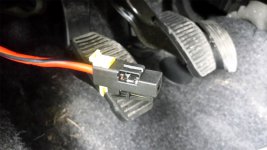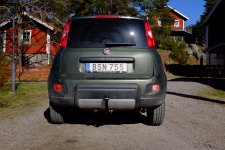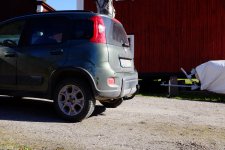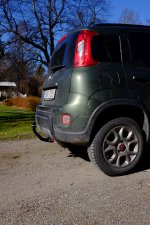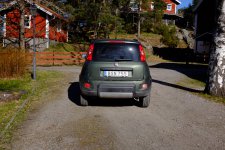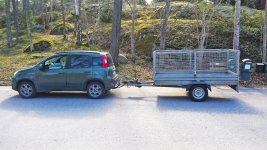- Joined
- Nov 24, 2014
- Messages
- 34
- Points
- 26
I finally got around to fitting my towbar this weekend.
Towbar was easy, the electrics are a pain. Most of it is now done, the only thing left to do is to connect a power line into a positive wire coming off the battery. There's a nice chunky one going into the fuse box under the steering wheel that I'd like to join onto, but first I need to remove the plastic cover from the connector.
Does anyone know how to slide the metal part out of the plastic holder. There's a yellow plastic tab that slides out, which I figured would unlock things, but no joy. I'm guessing something inside the hole it uncovers needs lifting/pushing down, but I can't work it out.
I've attached a picture (I've rested the yellow locking tab on the back of the plug so you can see it).
Any clues as to how to dismantle this connector would be very much appreciated. Thanks.
Towbar was easy, the electrics are a pain. Most of it is now done, the only thing left to do is to connect a power line into a positive wire coming off the battery. There's a nice chunky one going into the fuse box under the steering wheel that I'd like to join onto, but first I need to remove the plastic cover from the connector.
Does anyone know how to slide the metal part out of the plastic holder. There's a yellow plastic tab that slides out, which I figured would unlock things, but no joy. I'm guessing something inside the hole it uncovers needs lifting/pushing down, but I can't work it out.
I've attached a picture (I've rested the yellow locking tab on the back of the plug so you can see it).
Any clues as to how to dismantle this connector would be very much appreciated. Thanks.


